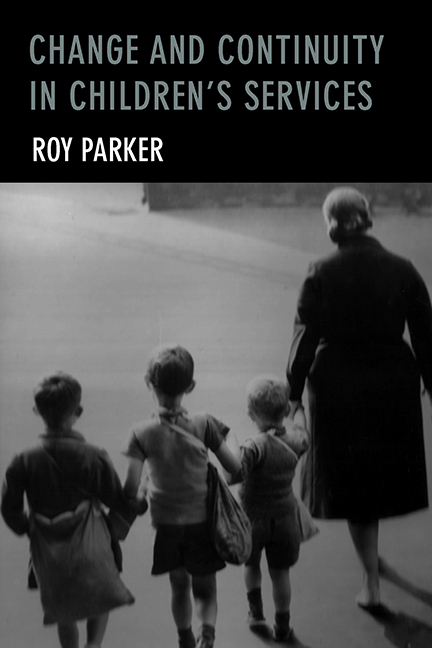Book contents
- Frontmatter
- Dedication
- Cover illustration
- Contents
- Acknowledgements
- Preface
- 1 Introduction: patterns of change and continuity
- 2 Residential child care: an historical perspective
- 3 From boarding-out to foster care
- 4 The evolution of landmark legislation
- 5 Getting started with the Children Act 1948: what do we learn?
- 6 Child care in the melting pot in the 1980s
- 7 Trends, transitions and tensions: children’s services since 101 the 1980s
- 8 Reflections on the assessment of outcomes in child care
- 9 The role and function of inquiries
- 10 Evidence, judgement, values and engagement
- 11 Emerging issues: looking ahead
- Notes and references
- Bibliography
- Index
4 - The evolution of landmark legislation
Published online by Cambridge University Press: 07 March 2022
- Frontmatter
- Dedication
- Cover illustration
- Contents
- Acknowledgements
- Preface
- 1 Introduction: patterns of change and continuity
- 2 Residential child care: an historical perspective
- 3 From boarding-out to foster care
- 4 The evolution of landmark legislation
- 5 Getting started with the Children Act 1948: what do we learn?
- 6 Child care in the melting pot in the 1980s
- 7 Trends, transitions and tensions: children’s services since 101 the 1980s
- 8 Reflections on the assessment of outcomes in child care
- 9 The role and function of inquiries
- 10 Evidence, judgement, values and engagement
- 11 Emerging issues: looking ahead
- Notes and references
- Bibliography
- Index
Summary
The three Children Acts of 1908, 1948 and 1989 each reflected the times in which they were enacted. Sometimes, as in 1908, politicians spoke of ‘a propitious moment’ or, as in 1989, of recent years having offered ‘an historic opportunity’ to reform child care law. What was it, therefore, in these instances, and in 1948, that created the climate in which it was judged both necessary and opportune to introduce these major legislative reforms?
I The ‘Children's Charter’ 1908
Although the Liberal Party had won a landslide victory in the election of January 1906 it is doubtful whether they came to power with a clearly formulated programme of social reform. However, sufficient measures followed, such as the Children Act of 1908 and the Old Age Pensions Act in the same year, for their administration often to be credited with creating the foundations of a welfare state. Yet the reasons for this departure are complex. Some lay within the Party where those such as Churchill and Lloyd George were keen to advance the cause of social reform. Some lay in what has been termed ‘the pressure from below’; that is, in a fear of the possible repercussions of working-class discontent and in the election of 29 Labour MPs in 1906. Even so, there was a more pervasive influence that encouraged social reform; namely, a growing concern about the decline of British power in the world.
The British Empire, seemingly so secure in the past, now looked under threat from the military and imperial aspirations of other European powers, especially Germany. Supremacy could no longer be taken for granted, a fact that had been starkly illustrated by the army's deficiencies in the Boer War (1899–1902). In future much was considered to depend upon improving the efficiency of the armed forces. Yet compelling evidence emerged of the unfitness of potential recruits. A large number of young men, not long out of school, were being rejected on medical grounds. An article written by a Major General in the Contemporary Review in 1902 put the proportion at 60%. A year later the Director of the Army Medical Service, although questioning the exact proportion, nevertheless drew a similar conclusion. The implications were clear. If the problem were to be remedied then the health of the rising generation had to be improved; and this conviction merged with growing support for the eugenics movement in influential circles and for the ideas of those who promoted the case for ‘national regeneration’.
- Type
- Chapter
- Information
- Change and Continuity in Children's Services , pp. 55 - 68Publisher: Bristol University PressPrint publication year: 2015



